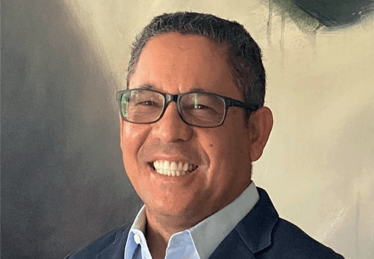Quick-Fire Q&A: Biosimilars in the US
Biosimilars have been available in Europe for years. Is the US still lagging behind?
Stephanie Vine | | 3 min read
With Rober Salcedo, CEO and Co-Founder of Biosimilar Solutions

Why did you launch Biosimilar Solutions?
I was first exposed to biologics when my aunt was diagnosed with cancer. She sadly died because she could not afford her medicine – a harsh reality that anchored my ambition to develop more affordable medicines for the world.
One day, we will be able to cure cancer. And through our efforts in the biosimilar space, we will be there to make biologics affordable.
What is the current biosimilar situation in the US?
Currently, there are 31 FDA-approved biosimilars, with 20 launched in the US, representing seven unique molecules. Of the launched biosimilars, 17 have oncology indications – and that’s also where biosimilars have the highest rate of adoption. Notably, six years after the first biosimilar was approved by the FDA, the US has approved more than double the number of biosimilars approved by the UK in its first six years. Moreover, hundreds of biosimilar products are now being developed in the US, so it feels like biosimilar business is booming!
At my company, we have entered a license and development agreement with Reliance Life Sciences to commercialize Filgrastim and PEG-Filgrastim in the US. As part of our partnership, we also have five additional molecules we intend to commercialize in the US.
What are the biggest challenges for biosimilars companies – particularly in the US market?
Clinician uptake is difficult in the first year of commercial launch; familiarity with products tends to come from other physicians using the drug as well as the results of education programs.
The shifting regulatory landscape is another barrier; we’ve seen extensive policy updates in the US, including the Advancing Education on Biosimilars Act of 2021.
At a state level, as interchangeable biosimilars roll out, there may be changes with state policies that can create confusion among stakeholders. All policy changes, both positive and negative, will need to be communicated effectively to avoid stakeholders losing confidence in the products and the process.
Another barrier is the speed with which payers and benefits managers actually act on biosimilars coming to the market.
In some cases, biosimilars are not much cheaper than originators. What is the problem?
Biologic therapies account for most of Medicare Part B’s prescription drug spending, but price decreases have been minimal – even with biosimilar competition. Researchers attribute the lack of price drops to Medicare’s policy of reimbursing for biologics and biosimilars at 100 percent of each therapy’s average sales price (ASP), plus 6 percent of the reference product’s ASP, which they say encourages clinicians to select the highest-cost option for the greatest reimbursement.
Proponents of the current system contend it removes the bias toward using the higher-cost product. The Community Oncology Alliance, an association of independent oncology practices, has asserted that a common reimbursement code for reference products and biosimilars would encourage “race-to-the-bottom” pricing that would make drug supply chains unstable.
But note how brand-name and generic drugs are reimbursed at 106 percent of the weighted ASP of the brand-name and all approved generic products, incorporating the lower generic drug prices into the reimbursement and encouraging clinicians to select the lowest-cost option.

Making great scientific magazines isn’t just about delivering knowledge and high quality content; it’s also about packaging these in the right words to ensure that someone is truly inspired by a topic. My passion is ensuring that our authors’ expertise is presented as a seamless and enjoyable reading experience, whether in print, in digital or on social media. I’ve spent fourteen years writing and editing features for scientific and manufacturing publications, and in making this content engaging and accessible without sacrificing its scientific integrity. There is nothing better than a magazine with great content that feels great to read.



















